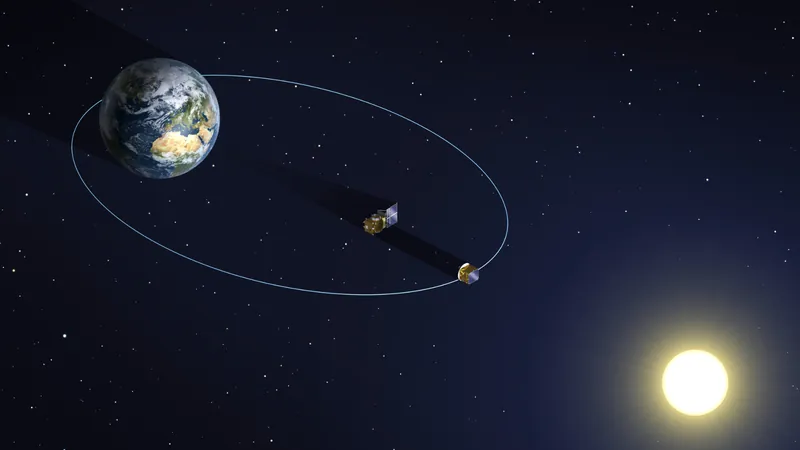
Groundbreaking Formation Flying: ESA's Proba-3 Satellites Set to Revolutionize Space Science
2025-05-12
Author: Ming
In an extraordinary leap for space exploration, two satellites have achieved unprecedented precision in formation flying, a feat that could reshape future missions and scientific discovery.
The European Space Agency's (ESA) Proba-3 mission showcases this innovation with its twin spacecraft, aptly named the Occulter and the Coronagraph. They flew in flawless synchrony, maintaining a razor-thin distance of just 150 meters (492 feet) apart, demonstrating millimeter-level precision in their movements.
Thanks to an advanced suite of sensors—including the Fine Lateral and Longitudinal Sensor (FLLS) laser instrument, shadow position sensors, and sophisticated camera systems—alongside onboard software and cold gas thrusters, the pair autonomously upheld their position for several hours.
"We are talking about millimetric accuracy in range, and sub-millimetric in the lateral position," proclaimed Damien Galano, project manager for Proba-3, as he highlighted the importance of this achievement.
This successful test lays the groundwork for the satellites to execute their main mission: the Occulter will block sunlight to create a total solar eclipse, allowing the Coronagraph to observe the sun's corona—an elusive phenomenon typically only viewable from Earth.
Scientists believe that these artificial eclipses could unravel some of the sun's greatest mysteries, such as the enigma of its scorching corona, the driving forces behind solar wind, and the dynamics of material ejection during coronal mass ejections.
However, the implications of this formation flying breakthrough extend beyond solar studies. The cutting-edge technology could transform Earth observation, facilitate spacecraft docking, assist in exoplanet searches, and even support space-based gravitational wave detection.
Launched on an Indian PSLV rocket in December, the Proba-3 duo operates in a highly elliptical orbit, coming as close as 373 miles (600 kilometers) to Earth and venturing up to 37,612 miles (60,530 km) away. At their farthest point from Earth, the gravitational effects diminish, allowing for extended formation flying with minimal fuel.
Looking ahead, the next major hurdle will be preparing the spacecraft's scientific instruments for action and aligning them with the sun for those critical total solar eclipses.
"We can't wait to see the completion of the instrument calibration and the first processed image of the sun's corona," Galano added eagerly, hinting at the exciting discoveries on the horizon.




 Brasil (PT)
Brasil (PT)
 Canada (EN)
Canada (EN)
 Chile (ES)
Chile (ES)
 Česko (CS)
Česko (CS)
 대한민국 (KO)
대한민국 (KO)
 España (ES)
España (ES)
 France (FR)
France (FR)
 Hong Kong (EN)
Hong Kong (EN)
 Italia (IT)
Italia (IT)
 日本 (JA)
日本 (JA)
 Magyarország (HU)
Magyarország (HU)
 Norge (NO)
Norge (NO)
 Polska (PL)
Polska (PL)
 Schweiz (DE)
Schweiz (DE)
 Singapore (EN)
Singapore (EN)
 Sverige (SV)
Sverige (SV)
 Suomi (FI)
Suomi (FI)
 Türkiye (TR)
Türkiye (TR)
 الإمارات العربية المتحدة (AR)
الإمارات العربية المتحدة (AR)